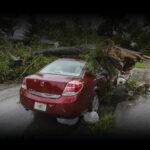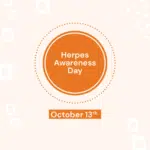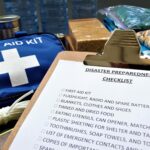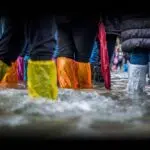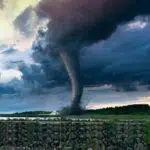Disaster Day or the International Day for Disaster Reduction is observed every October 13. The holiday is significant because a specialized, international forum for discussion and exhibition of global and local initiatives for disaster management and reduction is organized. The mission of the U.N. General Assembly’s decade-long declaration for Natural Disaster Reduction during the 1990s was to decrease the loss of life, property, and the disruption of socio-economic structures in disaster-hit areas. As part of the decade-long project, International Day of Disaster Reduction, or simply Disaster Day emerged.
History of Disaster Day
The world first observed Disaster in 1989 after the U.N. General Assembly rolled out the initiative to promote a culture of awareness on disaster risk reduction. With this, the 1990s was declared the International Decade for Natural Disaster Reduction.Although natural disasters are spontaneous, we can prepare to handle them and reduce the damage to a minimum through collaborative efforts. In this regard, the U.N. and many other organizations have created social work initiatives that have worked together to spread awareness on how to be prepared in any natural disaster situation. In America, the Federal Emergency Management Agency (FEMA), a federal institute under the U.S. Department of Interior, leads the response to any disaster that hits any part of the country. Since its formation in 1979, it has worked to develop a preparedness strategy and response mechanism against any kind of emergency, natural or manmade.Since the U.N. General Assembly’s declaration for every country to establish a disaster management and reduction department, FEMA has focused its attention on spreading monitoring and situational awareness, pre-disaster evaluation, response and recovery strategy, and ways to return to state-level operations. As part of the observance of Disaster Day, FEMA has worked in close collaborations with the U.N.-sponsored bodies and has encouraged representatives from concerned organizations to come together to arrange sessions to spread awareness on how to prepare for a disaster and tackle the situation after a disaster hits an area.
Disaster Day timeline
The agency is formed by President Jimmy Carter through an Executive Order to manage any disaster that hits the U.S.
After a call to action by the U.N. General Assembly to promote a day to spread disaster risk reduction awareness, October 13 is fixed as International Disaster Day.
After spreading sufficient awareness, the U.N. shifts its attention from Disaster Risk Reduction to overall Disaster Reduction.
At the Third U.N. World Conference, a people-focused and action-oriented approach to handling disaster risk reduction, post-disaster recovery, and support, is adopted.
Disaster Day FAQs
What is a disaster?
A disaster is an unpleasant emergency that destroys a lot of places and people. Factors can range from natural to man-made.
Why are disasters occurring?
Some disasters occur because of human factors. Most disasters occur because of the rapid changes in the earthscape due to increasing land vulnerability.
What are the challenges to mitigating disasters?
Earth’s disasters are becoming greater, more frequent, and more intense in magnitude. The capacity to fight and recover from disasters is low in most countries because of poverty, unpreparedness, and lack of resources. More serious efforts need to be made at an international level to mitigate disasters.
How to Observe Disaster Day
-
Participate in an awareness program
If you know anything about or have experienced surviving a disaster, share it with your community to spread awareness. You can also share your knowledge if you’ve ever helped in the recovery and normalizing of operations after a disaster.
-
Sign up for an awareness session
If you do not know much about disaster management, it is always useful to learn ways of survival, especially during a disaster. Sign up for any disaster awareness event near you.
-
Organize a charity event
Somewhere in the world, people are still trying to recover from a past disaster. Organize a charity event to donate funds and aid to such people.
5 Facts About Natural Disasters
-
A year without summer
In 1816, volcanic dust from an eruption in Indonesia spread so far that its effects reached Canada and the U.S., which resulted in an incredibly cold winter and widespread famine.
-
$1.7 trillion in damages
Between 2000 and 2012, the destruction by natural disasters worldwide has caused damage in excess of $1.7 trillion.
-
905 natural catastrophes
905 catastrophes were recorded in the year 2012 alone.
-
Natural hazards
Technically, natural disasters are actually natural hazards.
-
20 times more funds allocations
Allocation for emergency response and management is about 20 times higher than for disaster preparedness and awareness.
Why Disaster Day is Important
-
To learn from the effects of past disasters
We can learn from past catastrophes all year round, but a dedicated day to look back and reflect on how to reduce the risk of disaster can actually make a difference and raise the level of response in an emergency.
-
To spread international awareness
Once a person has the knowledge, it becomes a social responsibility to spread it to their community. This way, more and more people can learn and be prepared to handle a disaster.
-
To create new frameworks
Educated minds can sit together and come up with effective strategies and frameworks to advance the preparedness level for any kind of disaster. These frameworks would prepare the world for both natural hazards and man-made catastrophes.
Disaster Day dates
| Year | Date | Day |
|---|---|---|
| 2022 | October 13 | Thursday |
| 2023 | October 13 | Friday |
| 2024 | October 13 | Sunday |
| 2025 | October 13 | Monday |
| 2026 | October 13 | Tuesday |








